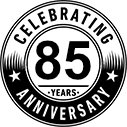Pro Dual Channel Strip
Item # 63542
Retail Price
$3495
Sale Price!
$3,145.00
Buy Today and Save $350.00 (10% from Retail)
We're sorry, this product is no longer available.
Rupert Neve Portico II Channel Strip Details
The Rupert Neve Portico II is a self-powered 2U Channel module comprised of a fully featured mic preamplifier, 4-band EQ, compressor-limiter, "texture" control and level metering. The Portico II includes a bevy of new features including: Variable Silk / Silk+ Texture control, a fully tunable de-esser, multiple VCA filtering and detection options, a transient-optimized swept HPF, and parallel compression blending. With its simple yet powerful topologies and extensive feature set, every element of the Portico II Channel Strip is geared towards providing unprecedented sonic integrity and creative capabilities.
Company owner and legendary designer Mr. Rupert Neve sees Portico II as a major advance in signal processing performance: "Our primary goal with the Portico II Channel was to combine the finest possible sound quality with a set of tools that both inspire creativity and expand the available tonal palette. With discrete, high voltage single-sided op-amps similar to those in the now famous 5088 mixer, together with groundbreaking features like texture control, I believe the Portico II Channel Module can adapt to suite the personality of any song, instrument or engineer."
One of the key developments in the Portico II is the new Texture section. Building on the "Silk" mode found in the Portico Series mic pre-amplifiers, Texture is designed to adjust the actual amount of harmonic music content from the source material, in effect, providing countless tonal options in one device. The texture section features distinct modes, controlled by a potentiometer from barely audible to dramatic.
Like the original Portico, Silk mode works by reducing negative feedback on the output transformer and adjusting the frequency response to more closely resemble Mr. Rupert Neve's vintage designs. "Silk +" mode pushes this technique still further, achieving a more harmonically rich sound.
A further array of tools are used to craft dynamic response. The Portico II's compressor section is exceptionally flexible. Like the Portico 5043, the compressor a choice of Forward - Feed / Return - Feed modes, either providing a transparent modern response, or a smoother more musical vintage response. Along with FF/FB modes, there are also 1:1 to 40:1 ratio controls and threshold from -30 dBu to +20 dBu, together with Attack from 20 to 75 ms (.1 ms in "fast" mode), Release from 100 ms to 2.5 s, and Make up gain from 0 to 20 dB with a Stereo Link.
The Portico II compressor however incorporates a number of new ways to tame or enhance dynamics. "HPF to SC" inserts the High Pass Filter into the side chain to deal with intense low frequencies that may skew the response of the VCA with certain songs and instruments. The "Fast" switch alters the compressor's attack to react to transients with a roughly .1ms response time. When "fast" is disengaged, the compressor responds to the RMS signal in conjunction with the attack and release settings. "Blend" works by creating a parallel mix between the compressed and dry signals. By mixing the compressed and dry signals, it is possible to increase the volume of quieter elements in the source material (for instance, delicate snare brushing on a track with much louder hits), while maintaining a natural dynamic feel for the louder elements.
To further control the side chain, there is also an insert "send" and "return" that may be paired with an external EQ or other filters for additional manipulation. The "return" may also be used as a "Key" input for ducking one signal under another (for instance, a voice-over keying the compressor to duck a background music track). By connecting the "link" jack on the back of the Portico II to another Portico II link jack and engaging the Link buttons, the compressor section may be used for stereo material.
The EQ topologies in the 4-Band Equalizer of the Portico II combine the best-loved sound of several classic designs, but are also capable of extremely fine surgical adjustments as well as dramatic boosts or cuts. By default, the EQ section follows the mic preamplifier and HPF, and precedes the compressor, but engaging the Post Comp switch will reverse this sequence.
The Low Shelf has an independent engage switch, Classic Peak/ Accelerated Shelf selection, with +/- 12 dB level adjustment, and selectable turnover frequencies of 35, 60, 100, and 220 Hz. The Fully Parametric LMF and HMF bands have a joint engage switch, providing +/- 12 dB level adjustment, continuously variable "Q" from 0.7 to 5 and continuously variable frequency ranges from 70 to 1.4 kHz and 700 Hz to 14 kHz. In addition to its standard capabilities, the HMF band can also be used to precisely tune a new De-Esser circuit.
The De-Esser can be varied from off to full effect, and uses the Frequency, and "Q" controls to tame harsh sibilance in vocals and instruments with an independent high-mid limiter. Even when the De-Esser is on, the EQ level may still be used. The High Frequency shelf has independent engage switch, Classic Peak/ Accelerated Shelf selection, +/- 12 dB level adjustment, and selectable turnover frequencies of 4.7, 6.8, 12, and 25 kHz. When two Portico II Channels are used side by side, the EQ section can also excel at stereo material.
Input signals may be derived from any of three sources - Microphone, Line or DI. The Microphone input has a 10 kilohm non-reactive input resistance that handles a full 26 dBu signal without the need for a pad. A primary Gain control provides 66 dB of gain in 6 dB increments for easy recall with a +/- 6 dB Trim for fine adjustment. A transient-optimized HPF continuously covering the range from 20-250 Hz is included. In addition the usual 48 V Phantom Power switch, Phase Inversion, Signal Present indicator and a Mute switch are included. The pre-amp is a TLA non-reactive design that precludes the loading of microphones with limited driving capability and which maintains a 2 dB noise figure over a wide range.
Inserting a ¼-in. plug into the DI input, selects a 3 megohm Discrete FET DI circuit that includes the transformer-coupled pristine topography that optimizes both the microphone and DI inputs, allowing low impedance microphones and high impedance sources like electric guitars and basses to deliver their optimum performance. Primary Gain and Trim controls are fully operational. A ¼-in. "Thru" jack on the front panel that duplicates the unaffected source signal allows the use of an external amplifier if required. A "Line" switch selects the independent Line XLR non-reactive input circuit that includes the HPF and Level trim controls.
Owned by Rupert and Evelyn Neve, Rupert Neve Designs Inc. was founded on passion, experience and a desire to build products embodying the highest musical quality. In continuing his legacy as a pioneer in audio circuit design, Mr. Rupert Neve is currently focusing his talents on creating further innovative analogue solutions to the issues facing the modern recording engineer.
0 0
MPN: PorticoII
- Texture: Continuously variable control for Silk and Silk+ modes allows the engineer to fine tune the harmonic ratio and tonality of the channel.
- Post Comp: Moves the EQ after the Compressor
- De-Esser: Tunable with the HMF EQ bandwidth reduction, the multi-variable De-Esser can be used to soften harsh sibilance in voices and instruments
- Blend: A parallel matrix providing continuously variable control to mix compressed and uncompressed signals
- FF/FB (Feed Forward/Feed Back) Changes the VCA Detection from a forward feed design (fast, more accurate attack & release) to a feed back design (smoother, more musical response)
- Super Fast: Overrides the attack setting, using a combination of peak and RMS detection set below 1ms
- Side Chain Send/Return: External compressor side chain send and return on 2 x TRS jacks. The send is always active and normalled to the return (NOTE: If the send and return are connected to a patchbay, the send should be normalled or connected to the return by default, as the compressor will not trigger if the return has no signal)
- Meters: Dual 16 point peak meters display compressor (not de-esser) gain reduction and output levels
- High Pass Filter: Continuously variable from 20-250Hz
- HPF to Side Chain: Uses the HPF in the Compressor Side Chain
- Gain: Provides 66dB in 6dB steps
- Trim: Continuous +/- 6dB level control
- Phase Inverts: Reverses the polarity of the signal
- Phantom Power: Selectable 48V for powering microphones
- DI: Discrete FET input for Hi-Z instruments
- Line Input: Selectable +4 balanced input
- LF EQ: +/-15dB adjustment at 35, 60, 100, and 220 Hz, independent LF engage, selectable classic bell or accelerated shelf curves
- LMF EQ: +/-15dB adjustment from 70 to 1.4KHz, with a continuous "Q" from .7 to 5., engaged with the MF switch.
- HMF EQ: +/-15dB adjustment from 700Hz to 14KHz, with a continuous "Q" from .7 to 5., engaged with the MF switch.
- HF EQ: +/-15dB adjustment at 4.7, 6.8, 12, and 25kHz, independent HF engage, selectable classic bell or accelerated shelf curves
- All EQ In: Enables all EQ Bands (Individual bands must still be engaged)
- Comp In: Engages Compressor section
Related Gear
-
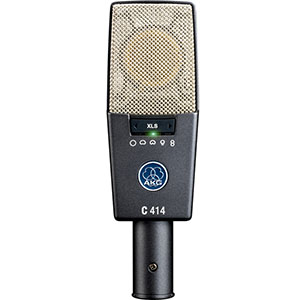
Akg C414 XLS
Item # 61482
Description
$1,279.00 View Details
Reference Multipattern Condenser Microphone -

Akg K240 MkII
Item # 43876
Description
$129.00 View Details
Dynamic Semi-open Pro Headphones -
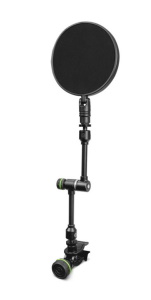
Gravity GMAPOP1
Item # 85795
Description
$59.95 View Details
Pop filter with VARI-ARM -
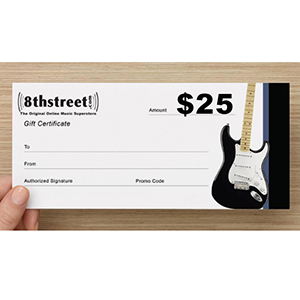
8th Street Music $25 Gift Certificate
Item # g25
Description
$25.00 View Details
Gift Certificate (may be purchased in multiple amounts)
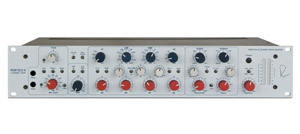 Pro Dual Channel Strip
MPN #: PorticoII
UPC #:
Regular price: $3495
$3145.0000
Available from:
8th Street Music
Condition: New
Out of Stock
Pro Dual Channel Strip
MPN #: PorticoII
UPC #:
Regular price: $3495
$3145.0000
Available from:
8th Street Music
Condition: New
Out of Stock




